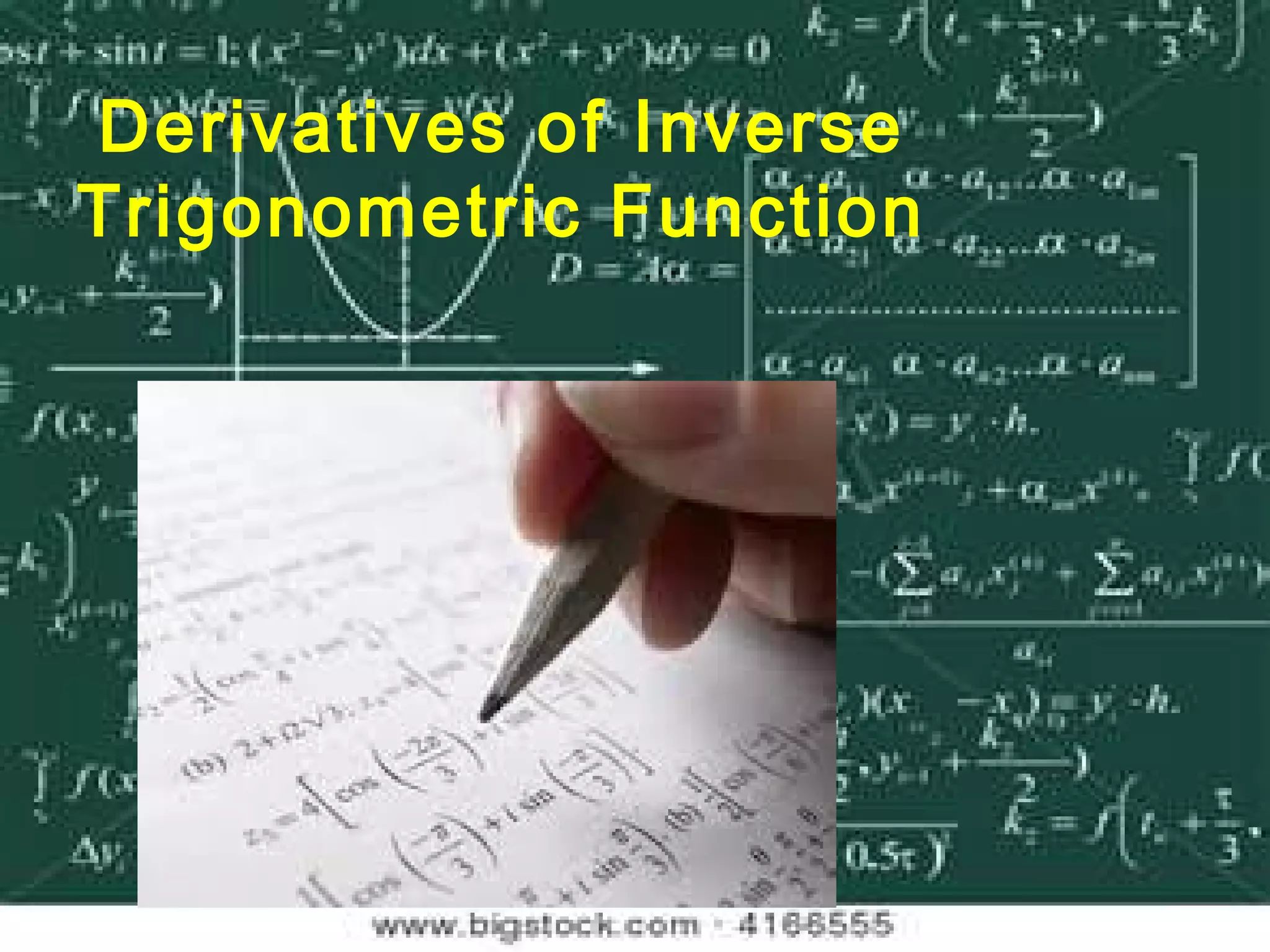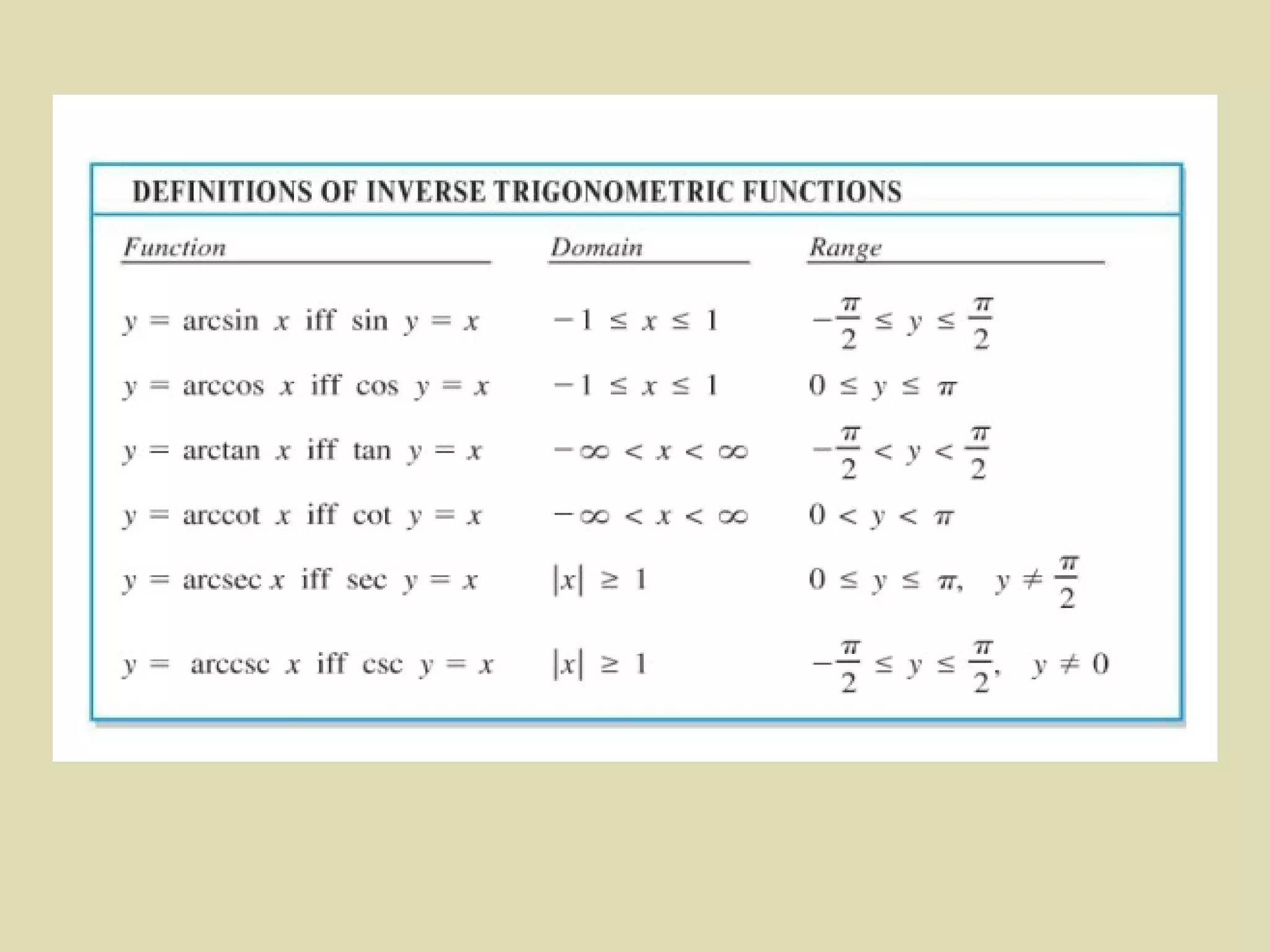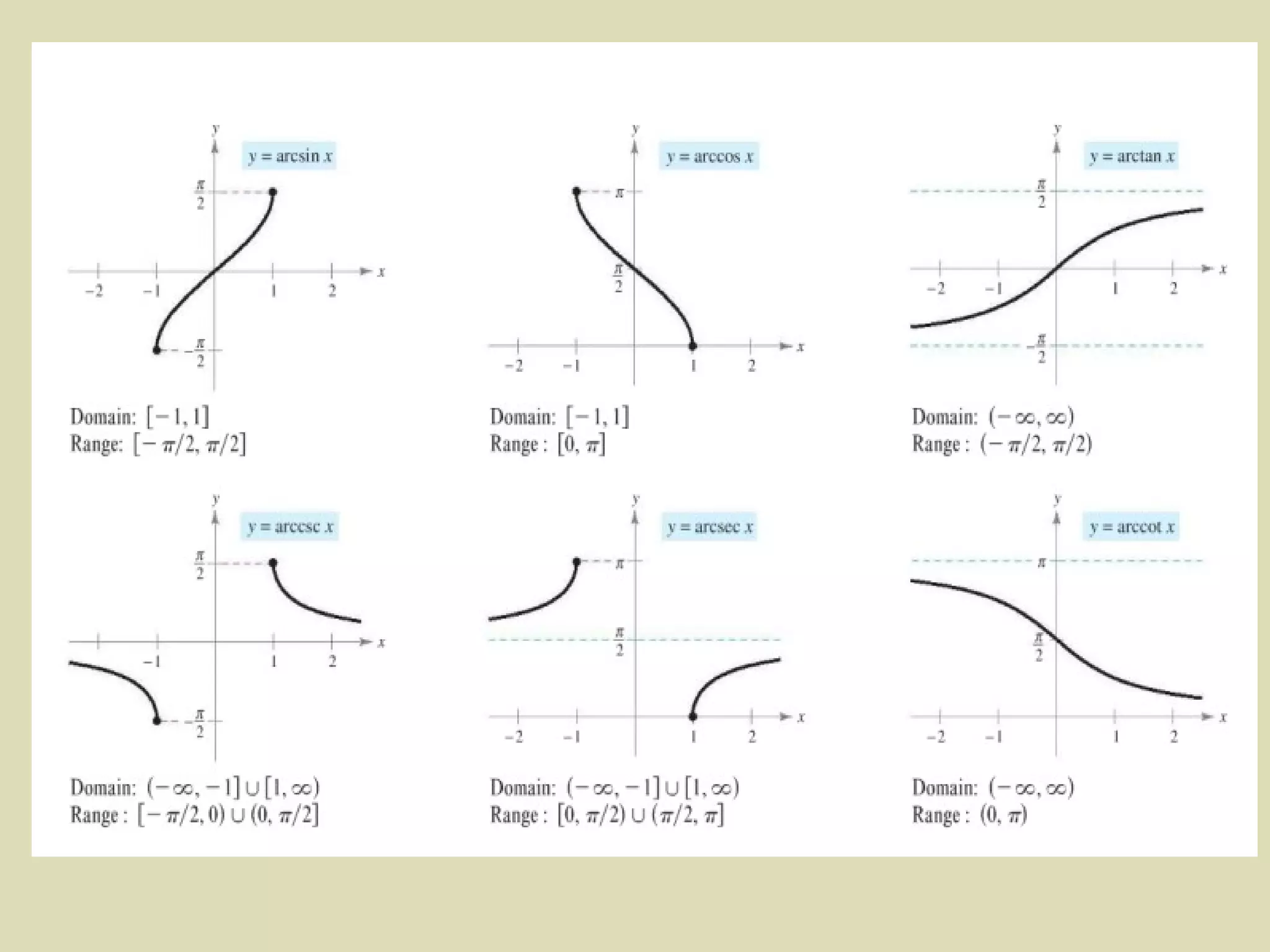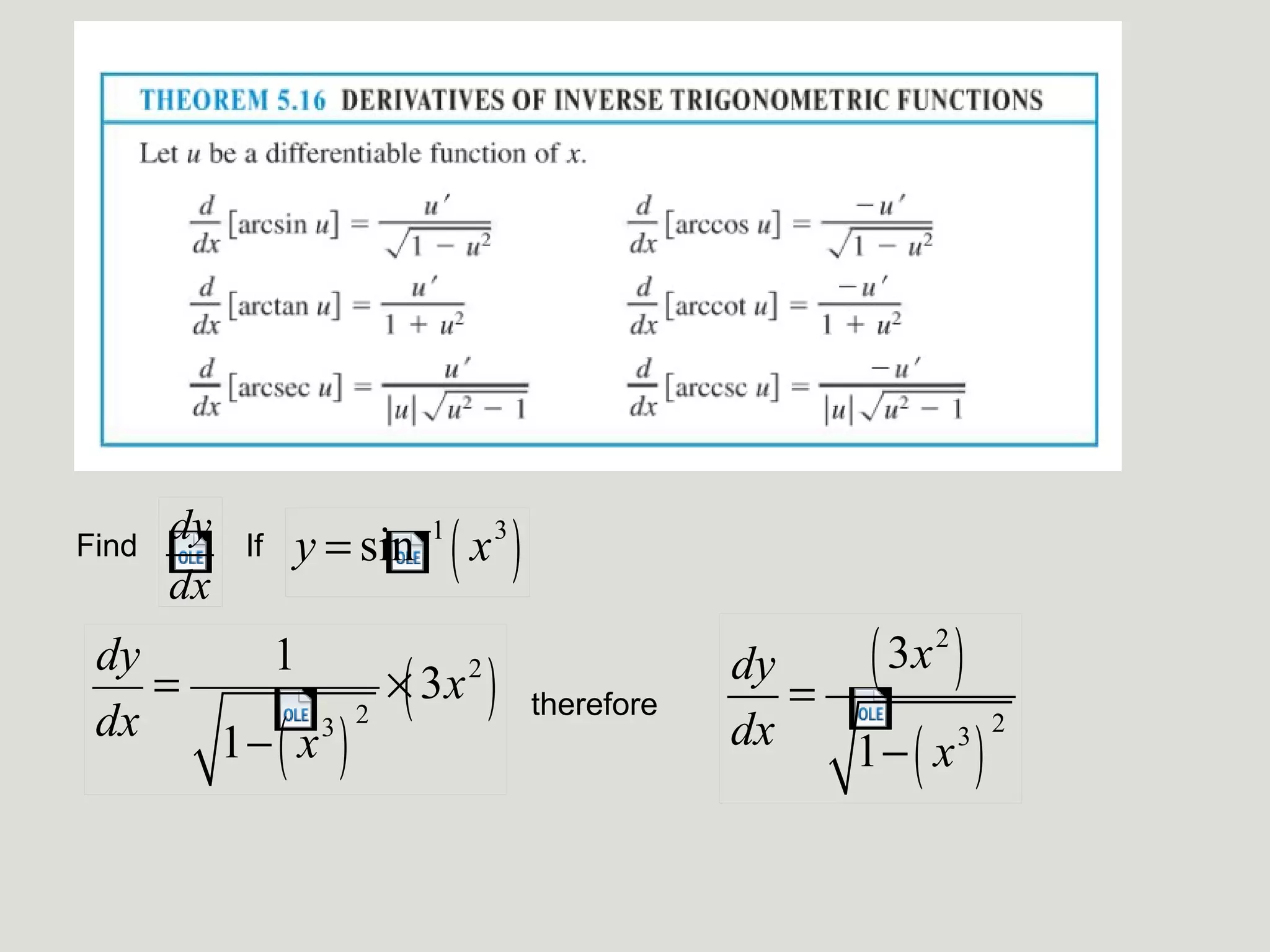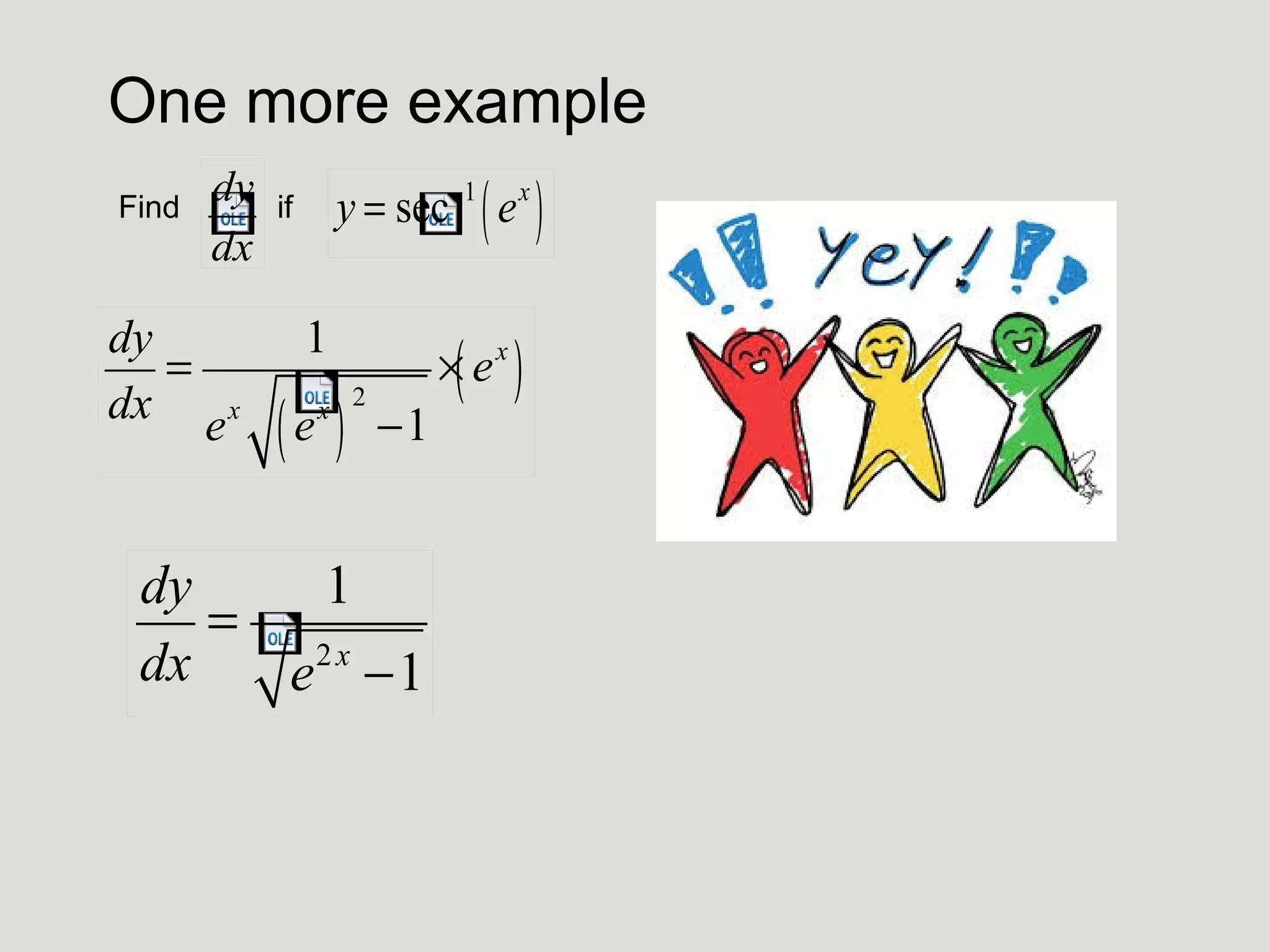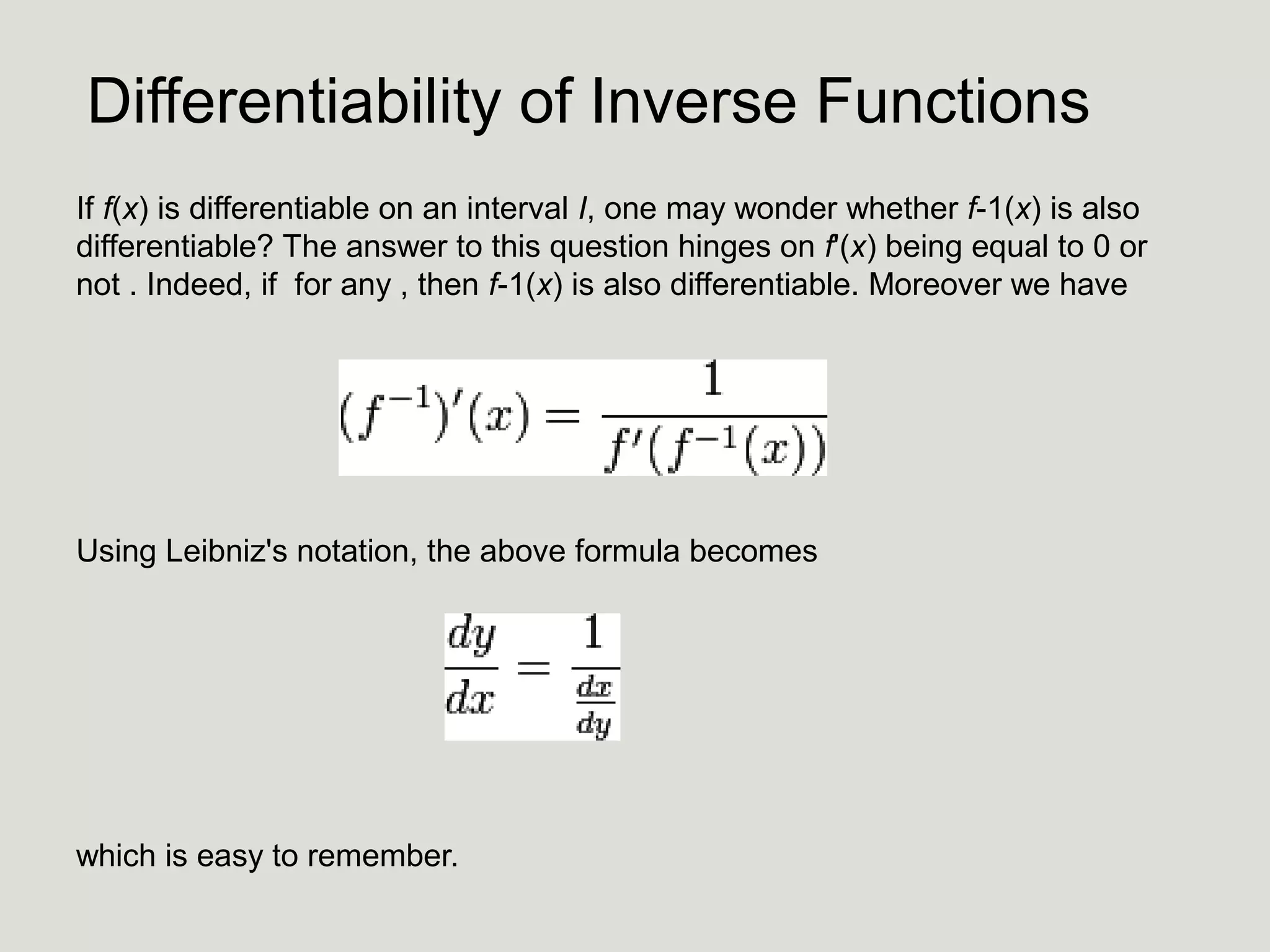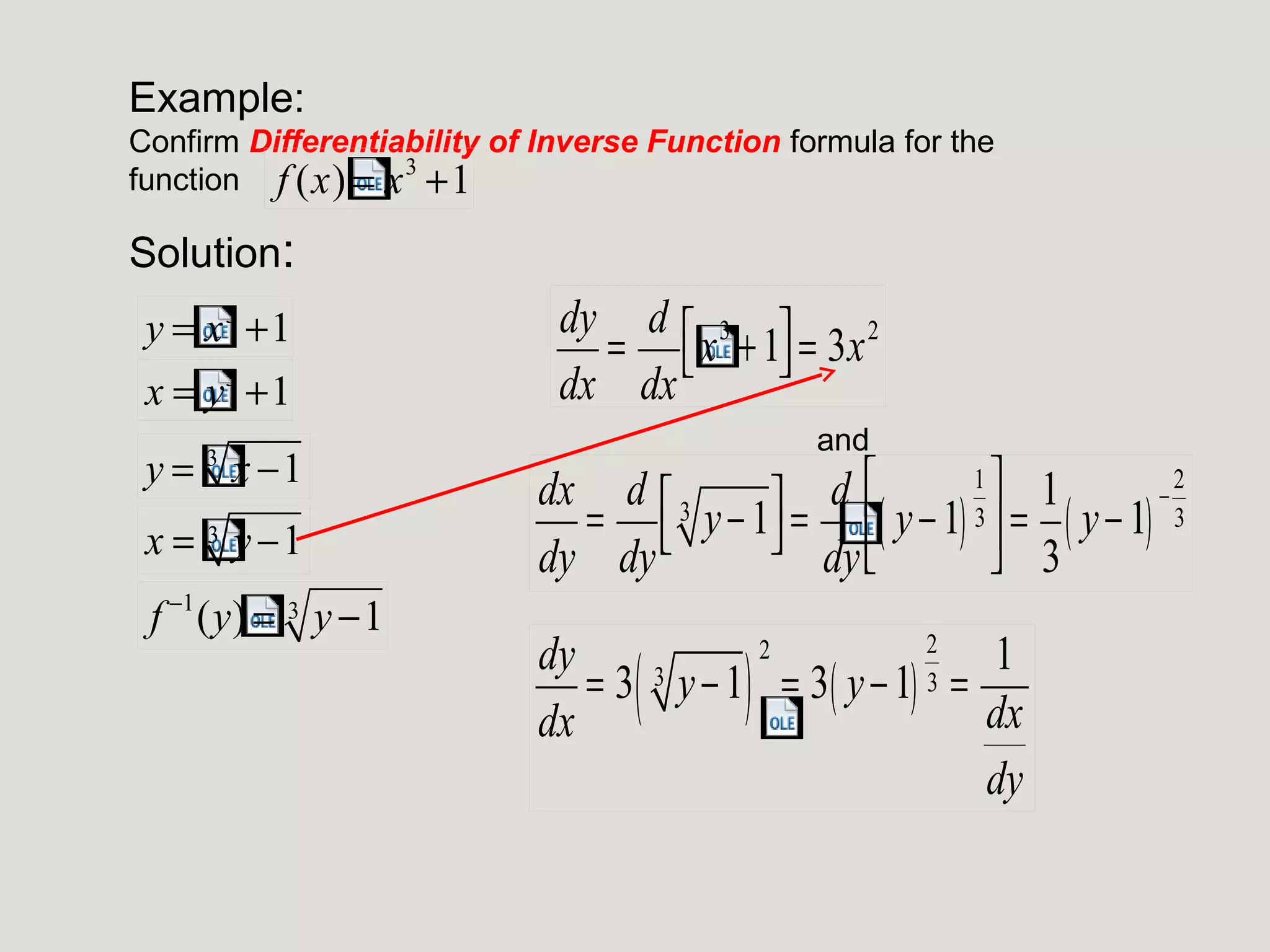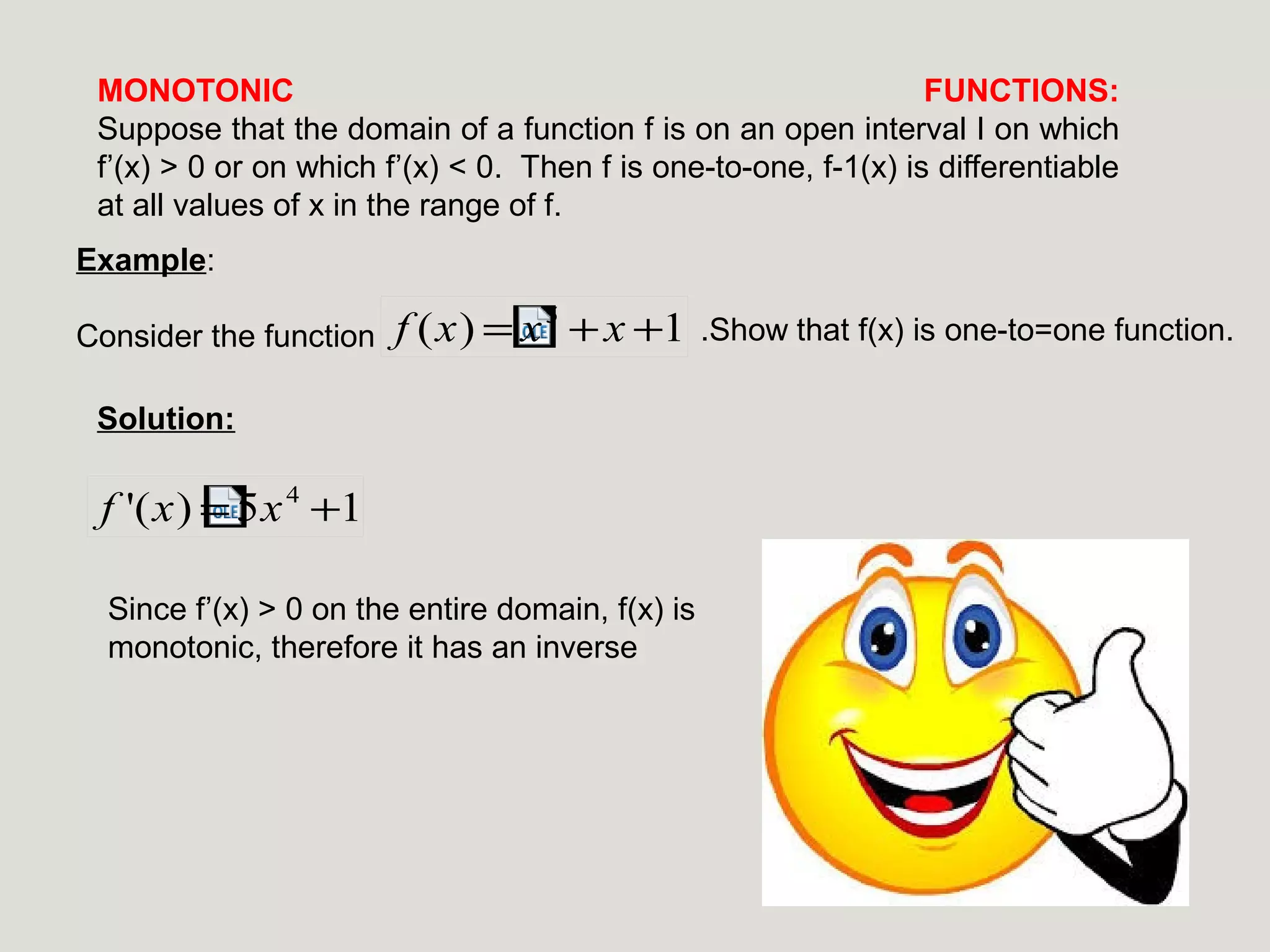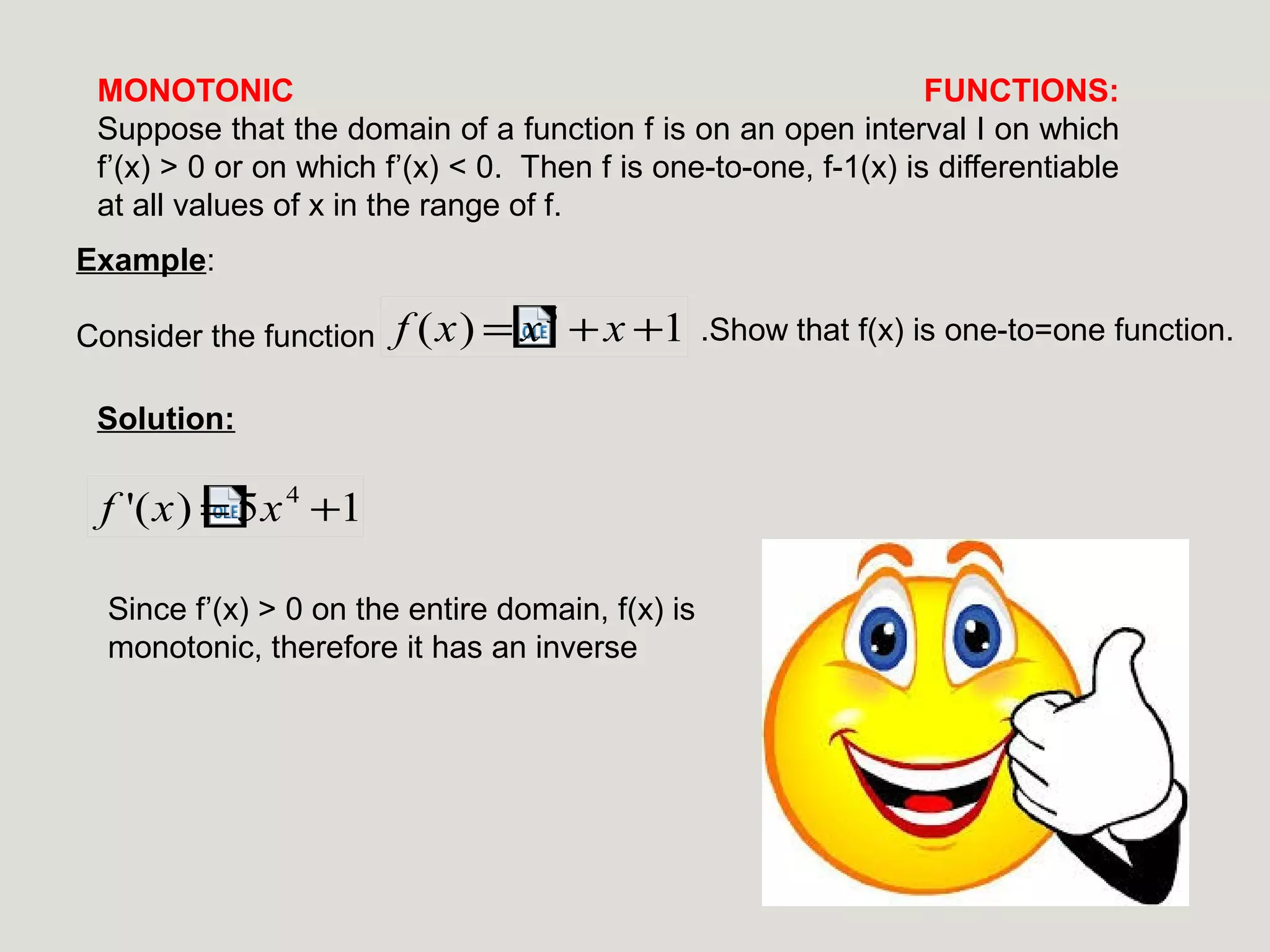This document discusses derivatives of inverse trigonometric functions and differentiability of inverse functions. It provides examples of finding the derivative of inverse trig functions like sin^-1(x^3) and sec^-1(e^x). It also explains that if a function f(x) is differentiable on an interval I, its inverse f^-1(x) will also be differentiable if f'(x) is not equal to 0. It gives the formula for the derivative of the inverse function and an example confirming this formula. It also discusses monotonic functions and how if f'(x) is always greater than 0 or less than 0, f(x) is one-to-one and its inverse will be different
